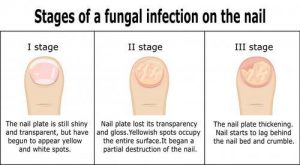Is Toenail Fungus Spreadable?
Spring has arrived, and you’re looking forward to exposing your toes to the sun once more. Unfortunately, fungus are lurking in the shadows, waiting for a place to call home, which happens to be your feet and toenails.
You should stay attentive about safeguarding your feet against toenail fungus this spring (or other time of year) to avoid developing the fungal infection.
The highly skilled podiatrist experts at Neuhaus Foot and Ankle thought we’d highlight a few prevention strategies to keep your feet looking beautiful during spring and summer to help ward off toenail fungus. We will look at whether toenail fungus is contagious and how to treat it if you become infected as part of this topic.
An Infection That Is Self-Contained
The quick answer to the question posed in the title of this blog, whether toenail fungus is communicable, is Yes and No.
Fungi that cause toenail fungus live in warm, moist, dark locations like locker rooms and public swimming pools. Fungi invade your toenails through small fissures or cracks around the edges or through small fissures or cracks. Once they’ve infected your toenail, an infection can set in, causing your toenails to turn into:
Thick
Crumbly
Yellowish
Odorous
The infection can cause your nails to split from their nail beds and permanently deform the shape of your toenails in severe situations.

Is Toenail Fungus Spreadable?
Toenail fungus is contagious in the sense that it can spread between your toenails and even infect your fingernails. You can also spread the fungus to others by sharing towels, socks, and other items. Because the fungus are transferred rather than the infection in these circumstances, direct person-to-person infection is uncommon.
Toenail Fungus Prevention
As previously said, toenail fungus is not often deadly, but there are certain exceptions, such as individuals with diabetes. However, because this fungal infection is exceedingly persistent in all cases, prevention is the best course of action.
To avoid coming into contact with infection-causing fungus, you should:
In public venues such as swimming pools and locker rooms, avoid going barefoot.
Hands and feet should be washed (particularly if you’ve touched an infected nail).
Avoid lingering in sweaty socks by keeping your feet dry.
Clean towels should be used, and they should not be shared.
Wear shoes that allow you to breathe.
Disinfect clippers, files, and other foot-related instruments.
Another key prevention approach is to regularly inspect your toenails and act as soon as you notice anything suspect. A little white or yellowish patch in your toenail is generally the first sign of toenail fungus. You can take quick action to prevent a fungal infection from spreading to your entire nail and nearby toenails if you recognize the early signs of a fungal infection.
Toenail Fungus Treatment
We emphasize the necessity of seeing us straight once if you acquire a fungal infection. We can provide you with the tools you need to eliminate the infection, depending on the severity of the condition.
Antifungal medications taken orally
Antifungal lotions for the skin
Nail lacquer with medicinal properties
